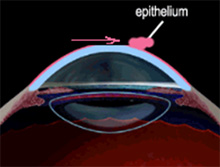What are dental sealants?
Sealants are thin, plastic coatings painted on the chewing surfaces of the back teeth.
Sealants are put on in dentists’ offices, clinics, and sometimes in schools. Getting sealants put on is simple and painless. Sealants are painted on as a liquid and quickly harden to form a shield over the tooth.
Sealants are clear or tinted. Tinted sealants are easier to see.
Are sealants new?
No, sealants are not new. They have been around for a long time! Research by NIDCR and others led to the development of sealants in the early 1960s.
But many people still do not know what sealants are. In fact, fewer than 20 percent of children in the United States have sealants!
How long do sealants last?
Sealants can last up to 10 years. But they need to be checked at regular dental check-ups to make sure they are not chipped or worn away. The dentist can repair sealants by adding more sealant material.
How much do sealants cost?
Sealing one tooth usually costs less than filling one tooth.
Having sealants put on healthy teeth now will save you money in the long run by avoiding fillings, crowns, or caps used to fix decayed teeth.
But the most important reason for getting sealants is to avoid tooth decay. Healthy teeth can last a lifetime!
Why get sealants?
By covering the chewing surfaces of the molars, sealants keep out the germs and food that cause decay.
What causes decay?
Germs in the mouth change the sugar in food to acid. The acid can eat a cavity in the tooth. The decay has to be cleaned out by drilling and then the tooth has to be filled.
Of course a healthy tooth is the best tooth, so it is important to prevent decay. That’s why sealants are so important.
Why do back teeth decay so easily?
The chewing surfaces of back teeth are rough and uneven because they have small pits and grooves. Food and germs can get stuck in the pits and stay there a long time because toothbrush bristles cannot brush them away.
Who should get sealants?
Children should get sealants on their permanent molars as soon as the teeth come in, before decay attacks the teeth.
The first permanent molars — called “6 year molars”– come in between the ages of 5 and 7.
The second permanent molars –“12 year molars”– come in when a child is between 11 and 14 years old.
The other teeth with pits and grooves — called “premolars” or “bicuspids”– right in front of the molars, also may need to be sealed.
Teenagers and young adults without decay or fillings in their molars also may get sealants.
Should sealants also be put on baby teeth?
Your dentist might think it is a good idea, especially if your child’s baby teeth have deep pits and grooves.
Baby teeth play an important role in holding the correct spacing for permanent teeth, so it is important to.
Besides sealants, are there other ways to prevent tooth decay?
Yes. The best way you can help prevent tooth decay is to brush with a fluoride toothpaste and drink fluoridated water (water is fluoridated in about half the cities and towns of the United States). If your water is not fluoridated or if your teeth need more fluoride to stay healthy, your dentist can prescribe it in the form of a gel, mouth rinse or tablet.
If you have a baby or a young child that needs fluoride and do not have fluoride in your water, your physician (pediatrician) or dentist can prescribe fluoride drops or tablets.
Fluoride is the best defense against tooth decay!
Fluoride . . .
- makes teeth more resistant to decay.
- repairs tiny areas of decay before they become big cavities.
- makes germs in the mouth less able to cause decay.
Fluoride helps the smooth surfaces of the teeth the most. It is less effective on the chewing surfaces of the back teeth (molars).
Regular brushing — with fluoride toothpaste — and flossing also help prevent tooth decay.
Sealants and fluoride together can prevent almost all tooth decay.











